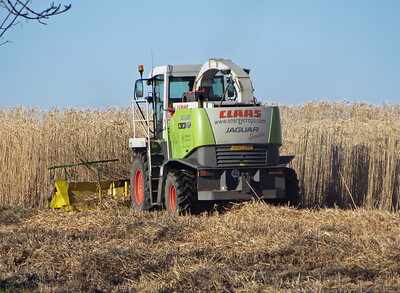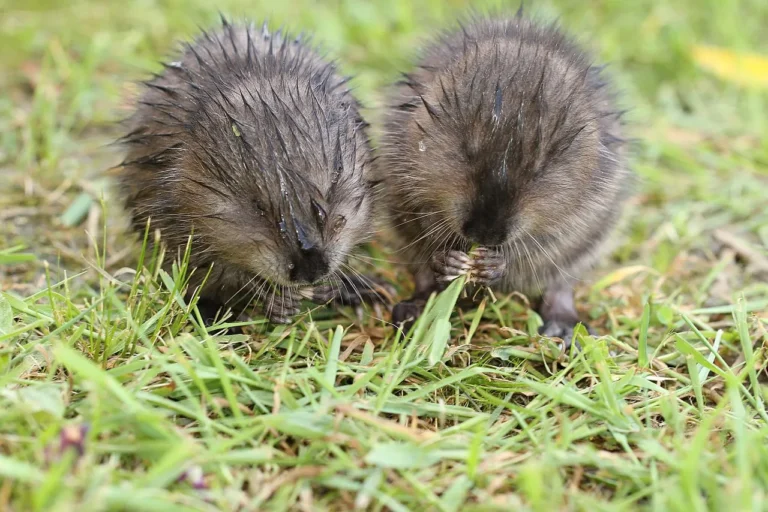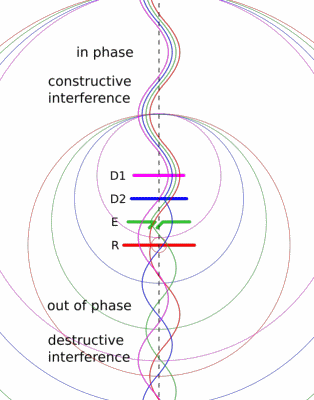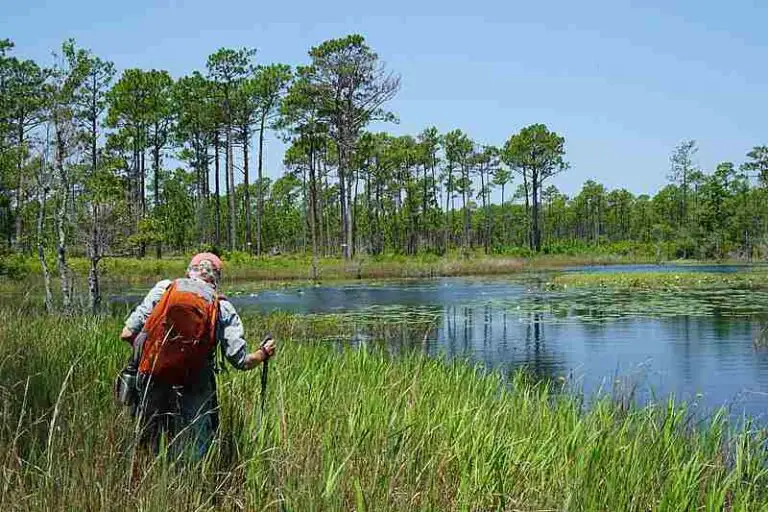15 Soil Restoration Methods and Techniques Fully Explained
Soil restoration methods are; organic composting, cover cropping, crop rotation, mulching, nitrogen fixation, revegetation, reforestation, drip irrigation, fertilizer application, bioaugmentation, biostimulation, controlled grazing, phytoremediation, desalination and decompaction.
They may be grouped broadly into natural and artificial methods or techniques, where the natural methods involve biological processes with minimal human intervention, and artificial methods require significant human intervention.
This article discusses the methods of soil restoration, as outlined below;
-Natural Soil Restoration Methods
-Artificial Soil Restoration Methods
Natural Soil Restoration Methods
1). Organic Composting
Composting is a well-known technique under organic farming, which is one of the practices of sustainable agriculture.
As a soil restoration method, it is effective as a way to rehabilitate degraded soils while conserving organic waste or biomass [9].
In the absence of methods like composting, these waste materials will be allowed to undergo biodegradation in landfills, thereby producing greenhouse gases like methane and carbon dioxide, as well as unpleasant-smelling gaseous products that are released into the atmosphere.
This implies that in addition to its direct role in soil restoration, composting indirectly mitigates climate change and global warming.
In composting, organic matter undergoes decomposition under controlled conditions to form a mineral-rich organic fertilizer called compost. This compost may be introduced into degraded or infertile soil to act as a soil amendment.
The most significant role played by compost in the soil is to enhance biological activity. When compost is introduced into soil, it enhances the growth of soil macro and micro organisms that breakdown the organic molecules.
Composting growth at all trophic levels of the energy pyramid in an agricultural ecosystem, beginning from the decomposer organisms like bacteria. The activities of these organisms in turn help to improve the structure, texture, moisture content, and fertility of the soil.
Various sources can provide the organic matter that is used in composting. However, food waste and agricultural residue are most common [20]. Composting has the advantage of being both environment-friendly and inexpensive.
2). Cover Cropping
Cover cropping is the cultivation of fast-growing, resilient crops specifically to protect, conserve and improve soil [21]. It is one of the most simple methods of soil restoration.
Cover cropping is particularly effective to restore and protect soils which have been degraded by erosion, leaching and flooding [17].
The crops which are cultivated may perform a variety of functions that include physical protection from weathering agents like wind and water, facilitating organic accumulation, and enabling nutrient fixation.
Cover crops improve soil structure due to the growth of roots that bind soil particles and create aeration spaces [12]. Examples of cover crops are radish, vetch, clovers, cowpea and rye.
The effectiveness of cover cropping increases when it is practiced alongside other sustainable soil conservation techniques like mixed farming and no-till farming.

3). Crop Rotation as one of the Soil Restoration Methods
Crop rotation is an agricultural method of soil conservation whereby various types of crops are cultivated in a sequential order, on a given area of land [22].
The method is useful for restoring soils that have been degraded and have lost their structure, aggregate composition and nutrients.
In crop rotation, plant species which will be cultivated are chosen based on their characteristics, and the specific needs or conditions on the site.
For example, on site where soil has been affected by erosion, the rotation sequence may include cover crops, as well as other resilient species to protect soil from direct impact of water and wind.
Other types of crops that may be selected in crop rotation projects include nitrogen-fixing crops and low nutrient-demand crops.
The sequence of crop rotation is designed in such a manner as will allow the soil to recover and improve its quality. A major advantage of this approach is that the soil remains productive even during the restoration process.
4). Organic Mulching
Organic mulching is the process by which biodegradable organic materials are used to form a protective and regenerative layer on the surface of soil.
Materials that can be used to form the organic layer include wood chips, leaves, grass clippings saw dust, and leaves [4].
As these materials decompose, they release nutrients that are absorbed by the soil to increase fertility. Decomposition also transforms the organic mulch into a homogenous layer of mineral-rich compost.
There are various beneficial functions of this homogeneous organic mulch layer. One of these is physical protection. Mulching is particularly helpful when there is need to cover the soil so as to reduce physical impact of precipitation and wind, and to prevent erosion [16].
It is also a suitable soil restoration method for recovering physicochemical and biological stability of soil.
A layer of organic mulch helps to improve compacted soil, by acting as a loose top layer, and by harboring soil organisms that can de-compact the soil through burrowing activity.
The layer also optimizes soil moisture content and temperature [6].

5). Biological Nitrogen Fixation
Biological nitrogen fixation (BNF) is the use of living organisms to absorb or trap atmospheric nitrogen, and convert it to ammonia through biochemical reduction.
There are multiple reasons why BNF is an environment-friendly practice. In addition to reducing the concentration of nitrogenous greenhouse gases in the atmosphere, it provides a mechanism by which mineral nitrogen (and essential nutrient) is supplied to the soil [19].
BNF is particularly useful when the primary aim of a soil rehabilitation project is to optimize fertility.
Organisms that are most useful in BNF include microbes like actinomycetes, blue-green algae (BGA) and Azobacter, as well as leguminous plants [2].
The microbes are referred to as ‘nitrogen-fixing’ organisms because they secrete enzymes and carry out metabolic activities that facilitate the process of nitrogen fixation. On the other hands, the plants serve as hosts to the nitrogen-fixing organisms, and provide a storage medium for the ammonia that is produced when nitrogen is converted.
Biological nitrogen fixation rehabilitates soil and improves fertility while optimizing structure, stability and biochemical composition. It is a versatile and effective method which can be applied on urban, industrial and agricultural soil under various conditions of land use.
6). Re-vegetation as one of the Soil Restoration Methods
Re-vegetation (or revegetation) is a method of soil restoration which involves re-planting of vegetation on soil, to improve its quality [13].
There are multiple functions of revegetation.
As a measure of environmental remediation, it is an effective means of treating degraded soil in lands that have been disturbed by unfavorable conditions like desertification, flooding, erosion, nutrient depletion, pollution and deforestation.
When vegetation is re-introduced into barren or degraded land, it stimulates helpful biological organisms and processes to occur at a faster and healthier rate. As a result, ecologic conditions on the site are improved.
Revegetation helps in restoring sites that have experienced the harmful effects of overgrazing and harsh climatic conditions. The presence of vegetation gradually reverses several of these harmful effects, especially those that directly affects the soil’s capacity to produce and support biodiversity.
A major indicator of the effect of revegetation is soil organic carbon (SOC) [11]. When revegetation is carried out effectively, the total organic carbon in soil is increased. The capacity of the soil to store or sequester atmospheric carbon also increases under such circumstances.
In order for revegetation to be effective and successful, careful selection must be used to determine the best plant species that will be introduced. Factors that help in selection include soil structure, nutrient concentration, drainage, degree of degradation, presence (or absence) of contaminants, climate and physicochemical conditions.
7). Reforestation
Reforestation (or re-afforestation) is the re-planting of woody perennial species (trees and shrubs) in depleted forests [14].
There are some similarities between reforestation, revegetation and afforestation. However, these are each different concepts.
The difference between reforestation and afforestation is that reforestation occurs in existing forest ecosystems, while afforestation occurs in non-forest or completely depleted areas.
Reforestation differs from revegetation in that reforestation involves forest vegetation and forest ecosystems, while revegetation does not involve forest ecosystems, and may be carried out using non-forest vegetation.
It is important to note that there are various means by which reforestation may occur. These include natural re-growth of forest vegetation, or replanting by humans.
Reforestation is highly recommendable as one of the best soil restoration methods in forested lands. It can reverse the effects of natural hazards like erosion, flooding, and wild fires.
The method is also recommendable when large-scale deforestation is being practiced, and it helps to replace harvested timber.
Within the context of sustainable development, reforestation ensures that forest resources are conserved in spite of hazards and human activity. It mitigates depletion of these resources, and helps in the efforts to achieve sustainability in the forest sector.
Aside tropical rainforest regions, reforestation is effective in conserving other forested zones like the tundra biome. Similarly, revegetation is effective for restoring soil and conserving resources in grassland ecosystems.

When reforestation is carried out, forest soils improve in terms of structure and nutrients. The replanted trees and shrubs protect the soil from erosion, while improving infiltration, and optimizing biological conditions.
Artificial Soil Restoration Methods
8). Drip Irrigation as one of the Soil Restoration Methods
Drip irrigation (also called trickle irrigation or micro-irrigation) is a type of irrigation whereby water is methodically introduced into soil in droplets and at low flow rates.
It is a specialized method that conserves water resources, while ensuring that enough moisture is evenly distributed in the soil [8]. Compared to other irrigation methods like sprinkler method, this is a highly effective and efficient way to moisturize the soil.
Drip irrigation is good for soil rehabilitation in cases where environmental degradation has been caused or promoted by drought and dry conditions. It is also effective to dissolve excessive salt precipitates in soil [3].
It can be practiced alongside other soil restoration methods like organic composting and revegetation. Drip irrigation must be practiced such that it does not have negative effects such as salinization and over-saturation.
9). Mineral Fertilizer Application
Mineral fertilizer (or chemical fertilizer) is the artificial equivalent of organic fertilizer or compost.
It is used as a soil amendment to supply nutrients for improved fertility and plant growth.
One of the advantages of mineral fertilizer is that it can be applied in precise measures based on the exact nutrient deficiencies of the soil and the needs of crops [18].
Mineral fertilizers are particularly helpful for agricultural soils that have been used intensively and require large amounts of nutrients, as well as for soils that have experienced severe leaching and erosion.
This soil restoration method may be used either independently or in combination with organic composting.
However, one of the objectives of sustainable farming is to reduce the use of chemical fertilizers, by replacing them with efficient, conservative and environment-friendly alternatives [5].
This is because of some environmental risks associated with chemical fertilizers, such as soil and water pollution, and eutrophication. To reduce these risks, mineral fertilizers must be used only to the extent that they are needed.
10). Bioaugmentation
Bioaugmentation is a method of bioremediation whereby microorganisms are introduced into a degraded medium from an external source, to increase its microbial population [23].
In soil restoration, bioaugmentation is mostly used to treat contaminated soil. The mechanism of bioaugmentation of soil is rapid biodegradation of contaminants through activities of microbes, to produce simpler products and elements that do not pose any harm to the environment.
Examples of contaminants removed through this method are; polyaromatic hydrocarbons (PAHs), heavy metals and polychlorinated phenyls (PCBs).
As stated earlier, the microbes are introduced into the soil to support or represent the in situ microbial population. These microbes are usually selected based on the type of contaminant, severity of contamination, and physicochemical conditions of the site.
In order to achieve the best results and the highest effectiveness, bioaugmentation should be practiced alongside techniques that enable the microbes to further reproduce and thrive in the soil.
11). Biostimulation
Biostimulation is the process whereby nutrients and optimal conditions are provided in order to facilitate and enhance the growth and survival of indigenous microbes in a medium [7].
It is also a method of bioremediation, and is often practiced alongside bioaugmentation.
However, biostimulation differs significantly from bioaugmentation, in that the microbes targeted in biostimulation are indigenous or autochthonous; meaning that they already exist in the soil. The aim of biostimulation is therefore to support the growth and rapid reproduction of already-present microbes, whereas bioaugmentation introduces new microbes to support the existing ones.
Like bioaugmentation, the use of biostimulation as a soil rehabilitation method, is most effective in cases of pollution, especially when the pollutants are hydrocarbons [15].
To stimulate growth and reproduction, the most common measure taken is nutrient-supply. Essential nutrients like nitrogen and phosphorus are introduced into soil either in the form of chemical fertilizer and supplements, or from organic compost.
In other cases, efforts are made to alter the physicochemical conditions of the soil like aeration, pH, acidity, and moisture content, in such a manner that it becomes favorable to support microbial growth.
The result of effective biostimulation is rapid microbe population increase and a rise in the effectiveness of biological activities and processes like biodegradation. This enables pollutants to be broken down at a faster and more thorough rate.
12). Controlled Grazing as one of the Soil Restoration Methods
Controlled grazing (or managed grazing) is the careful monitoring and regulation of grazing of livestock so as to prevent overgrazing and degradation of the environment.
As a soil conservation and restoration technique, controlled grazing entails the enforcement of limits upon how cattle may graze. The objectives of this practice include mitigating unhealthy compaction of the soil by cattle, and total loss of vegetation cover.
By conserving vegetation cover, problems like erosion, desertification and leaching are controlled, enabling the soil to remain biologically productive.
Controlled grazing may be implemented on land which is being replanted, to ensure that the effects of replanting are not erased. It is a useful approach to conserve natural resources of grassland biomes, and prevent degradation.
In sustainable farming systems like the integrated crop-livestock system (ICLS), controlled grazing allows crops and livestock to thrive and remain mutually beneficial without any drawbacks.
Lastly, controlled grazing helps in climate change reversal as well as mitigation, by preserving the carbon-sequestrating capacity of the environment, since both soil and vegetation can serve as carbon storage media [1].
13). Phytoremediation
Phytoremediation is a technique of bioremediation whereby plants are used to immobilize, breakdown and extract contaminants in soil and groundwater [24].
There are multiple advantages of phytoremediation. These include being cost-effective, environment-friendly, versatile and less complex.
With regards to being versatile, phytoremediation is effective for restoring soils that have been affected by hydrocarbon spills, heavy metal pollution, and mining.
The effectiveness of phytoremediation can be attributed to the fact that it is linked to numerous biological processes that improve soil. Plants used in phytoremediation are associated with microbes that can further assist in breaking down contaminants. These plants can also help in nitrogen fixation, which increases soil fertility and reduces atmospheric nitrogen.
While the basic concept behind phytoremediation is similar to that behind revegetation and reforestation, it is categorized among artificial soil restoration methods because the growth of plants in phytoremediation is monitored and controlled more carefully than in revegetation and reforestation. Therefore, phytoremediation involves more human intervention.
14). Desalinization as one of the Soil Restoration Methods
Desalinization (or desalination) is simply the removal of mineral salts from a medium like water or soil.
In soil desalination, various measures are taken to restore soil which has a hazardous concentration of salts like sulfates and carbonates.
The basic requirement for desalination to be successful is the presence of water-soluble salts.
Some causes of high salt concentration (or salinization) in soil are low-precipitation, excessive irrigation with saline water, presence of soluble minerals like calcium carbonate and gypsum, and poor drainage conditions.
Approaches used in desalination of soil include soil washing, gravity-based dissolution and artificial leaching. In all these approaches, water is used to eliminate salt precipitates by dissolution.
15). De-compaction
Soil de-compaction (or decompaction) is the restoration of soil structure after compaction has occurred.
The primary cause of soil compaction is force. When the soil is continuously impacted by force from the weight of cattle, humans, buildings and machines, its structure gradually changes as pore spaces shrink in size. This is the process of compaction.
Soil decompaction includes techniques that help loosen the soil and create fissures that enable aeration to occur.
When soil is de-compacted, organisms like microbes and earthworms, as well as plants, are able to thrive. Useful nutrients, gases and water can also infiltrate the soil, while contaminants become easier to eliminate.
Conclusion
Methods of soil restoration are;
- Organic Composting
- Cover Cropping
- Crop Rotation
- Organic Mulching
- Biological Nitrogen Fixation
- Re-vegetation
- Reforestation
- Drip Irrigation
- Mineral Fertilizer Application
- Bioaugmentation
- Biostimulation
- Controlled Grazing
- Phytoremediation
- Desalinization
- De-compaction
References
1). Abdalla, K. M.; Mutema, M.; Chivenge, P.; Chaplot, V. (2021). “Controlled Grazing of Maize Residues Increased Carbon Sequestration in No-Tillage System: A Case of a Smallholder Farm in South Africa.” Agronomy 11(7). Available at: https://doi.org/10.3390/agronomy11071421. (Accessed 23 July 2022).
2). Bagali, S. S. (2012). “Review: nitrogen fixing microorganisms.” Available at: https://doi.org/10.5829/idosi.ijmr.2012.3.1.61103. (Accessed 23 July 2022).
3). Burt, C.; Isbell, B. (2005). “Leaching of Accumulated Soil Salinity Under Drip Irrigation.” Transactions of the ASAE. American Society of Agricultural Engineers 48(6). Available at: https://doi.org/10.13031/2013.20097. (Accessed 23 July 2022).
4). Chalker-Scott, L. (2007). “Impact of Mulches on Landscape Plants and the Environment — A Review.” Available at: https://doi.org/10.24266/0738-2898-25.4.239. (Accessed 23 July 2022).
5). Chandini; Kumar, R.; Kunar, R.; Prakash, O. (2019). “The Impact of Chemical Fertilizers on our Environment and Ecosystem.” Research Trends in Environmental Sciences (pp.69-86). Available at: https://www.researchgate.net/publication/331132826_The_Impact_of_Chemical_Fertilizers_on_our_Environment_and_Ecosystem. (Accessed 23 July 2022).
6). Chavan, M. L.; Phad, P. R.; Khodke, U. M.; Jadhav, S. B. (2001). “Effect of organic mulches on soil moisture conservation and yield ofrabi sorghum (M-35-1).” International Agricultural Engineering Journal 2(2):322 – 328. Available at: https://www.researchgate.net/publication/339770087_Effect_of_organic_mulches_on_soil_moisture_conservation_and_yield_ofrabi_sorghum_M-35-1. (Accessed 23 July 2022).
7). Coulon, F.; Delille, D. (2003). “Effects of Biostimulation on Growth of Indigenous Bacteria in SubAntarctic Soil Contamined with Oil Hydrocarbons.” Oil & Gas Science and Technology – Revue de l IFP 58(4):469-479. Available at: https://doi.org/10.2516/ogst:2003030. (Accessed 23 July 2022).
8). Dukes, M. D.; Scholberg, J. M. S. (2005). “Soil moisture controlled subsurface drip irrigation on sandy soils.” Applied Engineering in Agriculture 21(1). Available at: https://doi.org/10.13031/2013.17916. (Accessed 23 July 2022).
9). Hubbe, M.; Nazhad, M. M.; Sánchez, C. (2010). “Composting as a way to convert cellulosic biomass and organic waste into high-value soil amendments: A review.” Bioresources 5(4):2808-2854. Available at: https://doi.org/10.15376/biores.5.4.2808-2854. (Accessed 23 July 2022).
10). Lal, R. (2015). “Restoring Soil Quality to Mitigate Soil Degradation.” Sustainability 7(5):5875-5895. Available at: https://doi.org/10.3390/su7055875. (Accessed 21 July 2022).
11). Li, Y.; Jiao, J.; Wang, Z.; Cao, B.; Wei, Y.; Hu, S. (2016). “Effects of Revegetation on Soil Organic Carbon Storage and Erosion-Induced Carbon Loss under Extreme Rainstorms in the Hill and Gully Region of the Loess Plateau.” International Journal of Environmental Research and Public Health 13(5):456. Available at: https://doi.org/10.3390/ijerph13050456. (Accessed 23 July 2022).
12). Liu, A.; Ma, B. L.; Bomke, A. A. (2005). “Effects of Cover Crops on Soil Aggregate Stability, Total Organic Carbon, and Polysaccharides.” Soil Science Society of America Journal 69(6):2041-2048. Available at: https://doi.org/10.2136/sssaj2005.0032. (Accessed 23 July 2022).
13). Mensah, A. K. (2015). “Role of revegetation in restoring fertility of degraded mined soils in Ghana: A review.” International Journal of Biodiversity and Conservation 7(2):57-80. Available at: https://doi.org/10.5897/IJBC2014.0775. (Accessed 23 July 2022).
14). Pereira, L. C.; Oliveira, C. C.; Torezan; J. M. (2013). “Woody Species Regeneration in Atlantic Forest Restoration Sites Depends on Surrounding Landscape.” Natureza & Conservaç~ao Revista Brasileira de Conservaç~ao Da Natureza 11(2):138-144. Available at: https://doi.org/10.4322/natcon.2013.022. (Accessed 23 July 2022).
15). Popoopa, L. T.; Yusuff, A. S.; Adeyi, A. A.; Omotara, O. O. (2021). “Bioaugmentation and biostimulation of crude oil contaminated soil: Process parameters influence.” South African Journal of Chemical Engineering 39(3). Available at: https://doi.org/10.1016/j.sajce.2021.10.003. (Accessed 23 July 2022).
16). Prosdocimi, M.; Tarolli, P.; Cerdà, A. (2016). “Mulching practices for reducing soil water erosion: A review.” Earth-Science Reviews 161:191-203. Available at: https://doi.org/10.1016/j.earscirev.2016.08.006. (Accessed 23 July 2022).
17). Riedel, M. S. (2021). “Efficacy of Cover Crops to Improve Nitrogen Use Efficiency and Reduce Leaching to Groundwater.” Available at: https://www.researchgate.net/publication/354223793_Efficacy_of_Cover_Crops_to_Improve_Nitrogen_Use_Efficiency_and_Reduce_Leaching_to_Groundwater. (Accessed 23 July 2022).
18). Schröder, J. J. (2014). “The Position of Mineral Nitrogen Fertilizer in Efficient Use of Nitrogen and Land: A Review.” Natural Resources 05(15):936-948. Available at: https://doi.org/10.4236/nr.2014.515080. (Accessed July 2022).
19). Shah, A. (2014). “Determination of Biological Nitrogen Fixation Induced N 2 O Emission from Arable Soil by Using a Closed Chamber Technique.” Applied and Environmental Soil Science 2014(1, article gb1032):1-10. Available at: https://doi.org/10.1155/2014/685168. (Accessed 23 July 2022).
20). Shilev, S.; Naydenov, M.; Vancheva, V.; Aladjadjiyan, A. (2006). “Composting of Food and Agricultural Wastes.” Utilization of by-products and treatment of waste in food industry (pp.283-301) Springer. Available at: https://doi.org/10.1007/978-0-387-35766-9_15. (Accessed 23 July 2022).
21). Singhal, V.; Ghosh, J.; Jinger, D. (2021). “Cover crop technology -a way towards conservation agriculture: A review.” Indian Journal of Agricultural Sciences 90(12):2275-84. Available at: https://www.researchgate.net/publication/349162605_Cover_crop_technology_-a_way_towards_conservation_agriculture_A_review. (Accessed 23 July 2022).
22). Stein, S.; Steinmann, H. (2018). “Identifying crop rotation practice by the typification of crop sequence patterns for arable farming systems – A case study from Central Europe.” European Journal of Agronomy 92:30-40. Available at: https://doi.org/10.1016/j.eja.2017.09.010. (Accessed 23 July 2022).
23). Thompson, I. P.; Van der Gast, C.; Ciric, L.; Singer, A. C. (2005). “Bioaugmentation for bioremediation: The challenge of strain selection.” Environmental Microbiology 7(7):909-15. Available at: https://doi.org/10.1111/j.1462-2920.2005.00804.x. (Accessed 23 July 2022).
24). Truua, J.; Espenberg, M.; Nõlvak, H. Juhanson, J. (2015). “Phytoremediation And Plant-Assisted Bioremediation In Soil And Treatment Wetlands: A Review.” The Open Biotechnology Journal 9:85-92. Available at: https://doi.org/10.2174/1874070720150430E009. (Accessed 23 July 2022).




